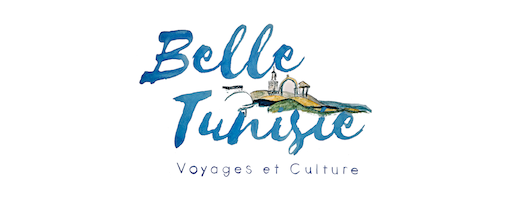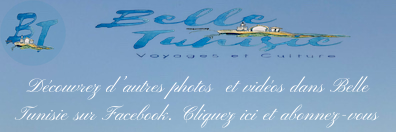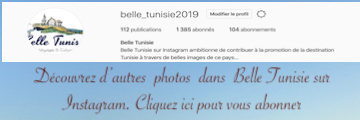Les grands noms de la peinture en Tunisie
(English version below)
Du fait de l'interdit de la reproduction de l'image humaine, les dynasties musulmanes régnantes ont étouffé l'art pictural durant des siècles. Les peintres se sont alors tournés vers la calligraphie.
L'introduction de l'art plastique en Tunisie a lieu au début du XIXe siècle, à travers la peinture sous verre. À la fin du siècle, une nouvelle tendance voit le jour, la peinture de chevalet, qui permet à l'artiste d'exprimer son point de vue subjectif ; Ahmed Osman, fils d'un général de l'armée beylicale tunisienne, qui étudie la peinture académique à Rome, en est le premier représentant. Parmi ses œuvres figure le fameux portrait du général Kheireddine Pacha à cheval.
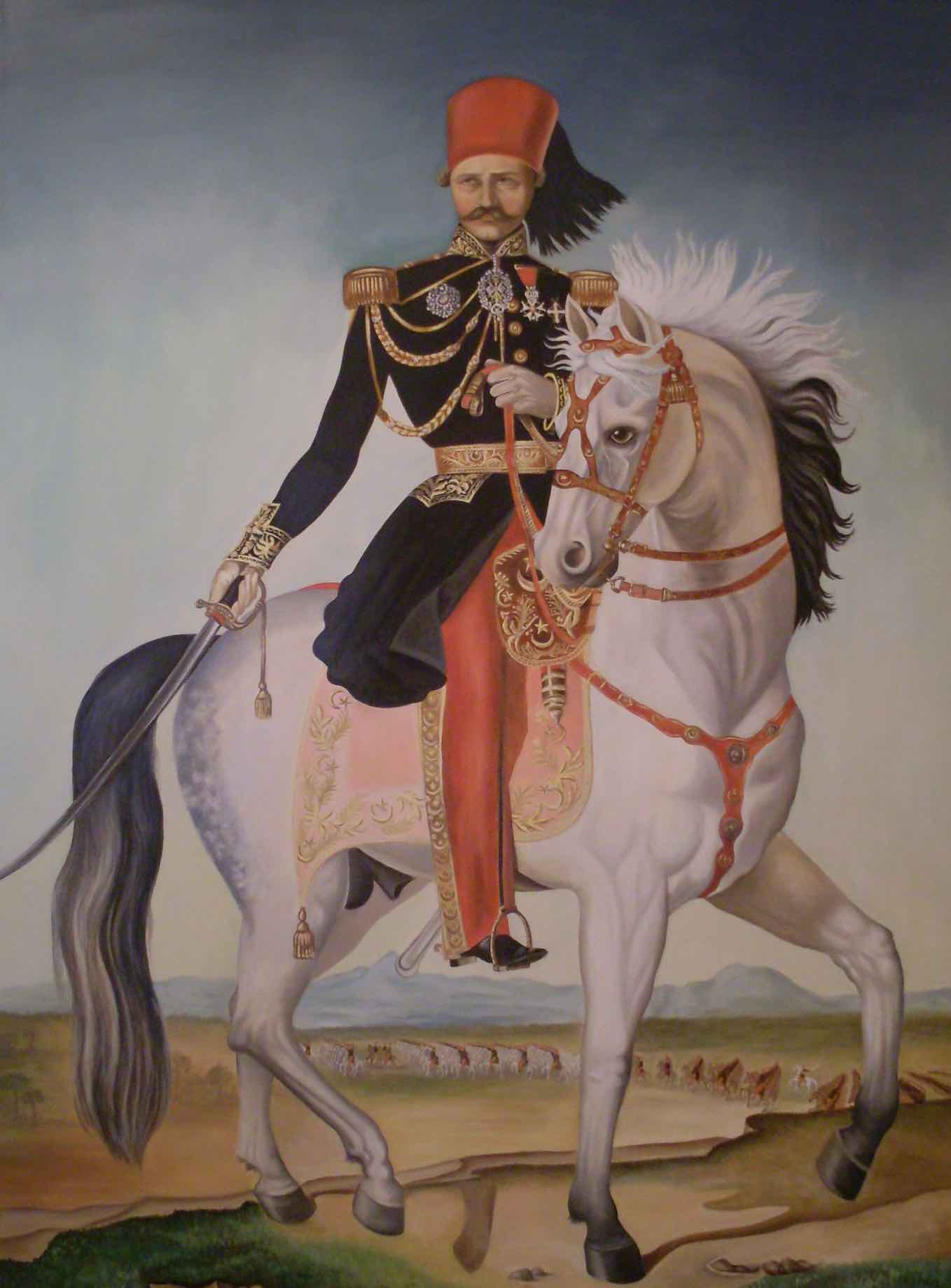
Ahmed Osman - Kheireddine Pacha
L'histoire de la peinture tunisienne débute véritablement avec les figures de Hédi Khayachi et Abdelwaheb Djilani alias Abdul, frère de l'historien Hassan Hosni Abdelwaheb.
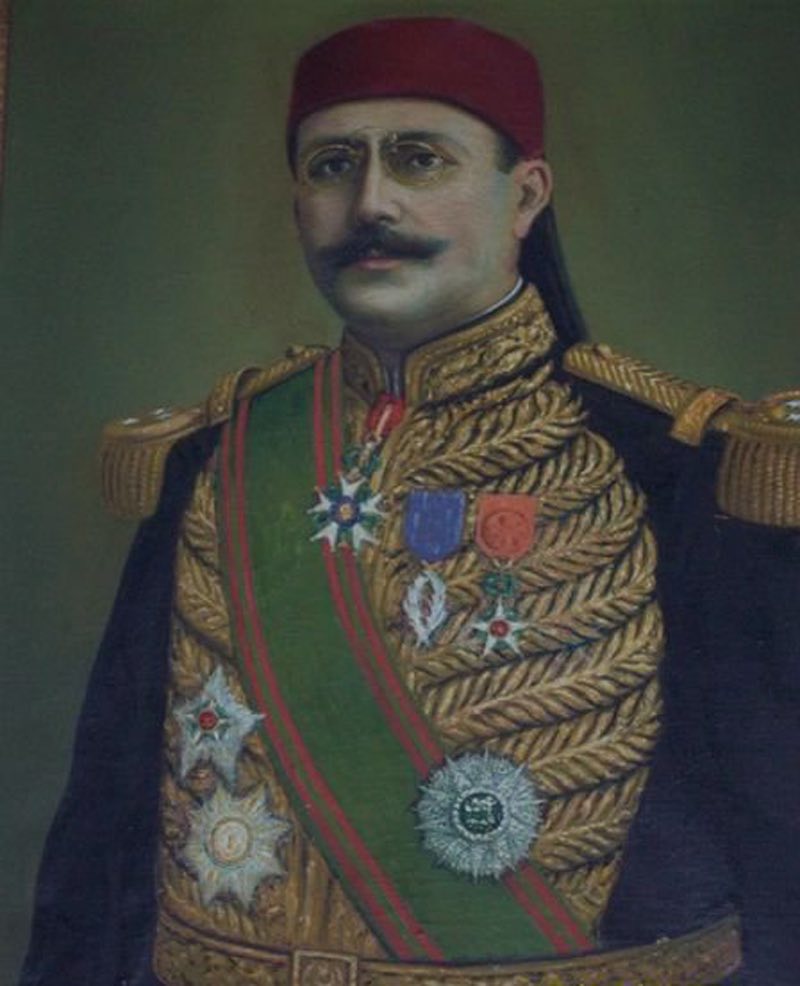
Hédi khayachi - Portrait de Hédi Lakhoua
Tous deux issus de la bourgeoisie tunisoise, ils suivent leurs études artistiques en Europe et se rattachent au réalisme, au folk art et au paysagisme, même si Khayachi se spécialise dans l'art du portrait. Peintre officiel des beys de Tunis, il devient le plus célèbre portraitiste tunisien de tous les temps ; il travaille par ailleurs pour les hauts fonctionnaires et les grandes familles tunisiennes.
Le 11 mai 1894 s'ouvre le premier Salon tunisien, dans les locaux de l'Association ouvrière maltaise transformés pour l'occasion en galerie.
La manifestation accueille les pionniers de la peinture tunisienne, à l'exception de Khayachi qui manie la peinture occidentale.
En 1912, Abdul est le premier Tunisien à y exposer ses œuvres, suivi par Yahia Turki à partir de 1923.
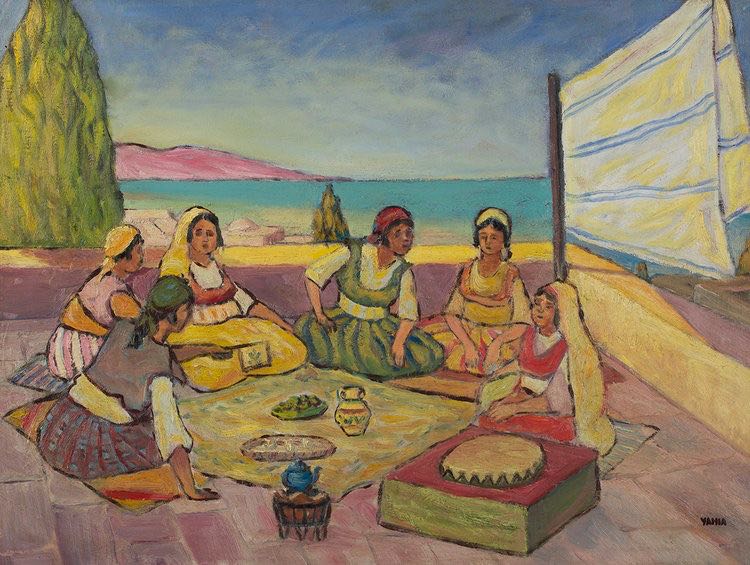
Yahia Turki - Sans titre
On y assiste à la naissance d'un art figuratif qui s'intéresse toujours aux mêmes thématiques malgré les origines variées des artistes. Alors que Turki est né d'un père djerbien et d'une mère turque.
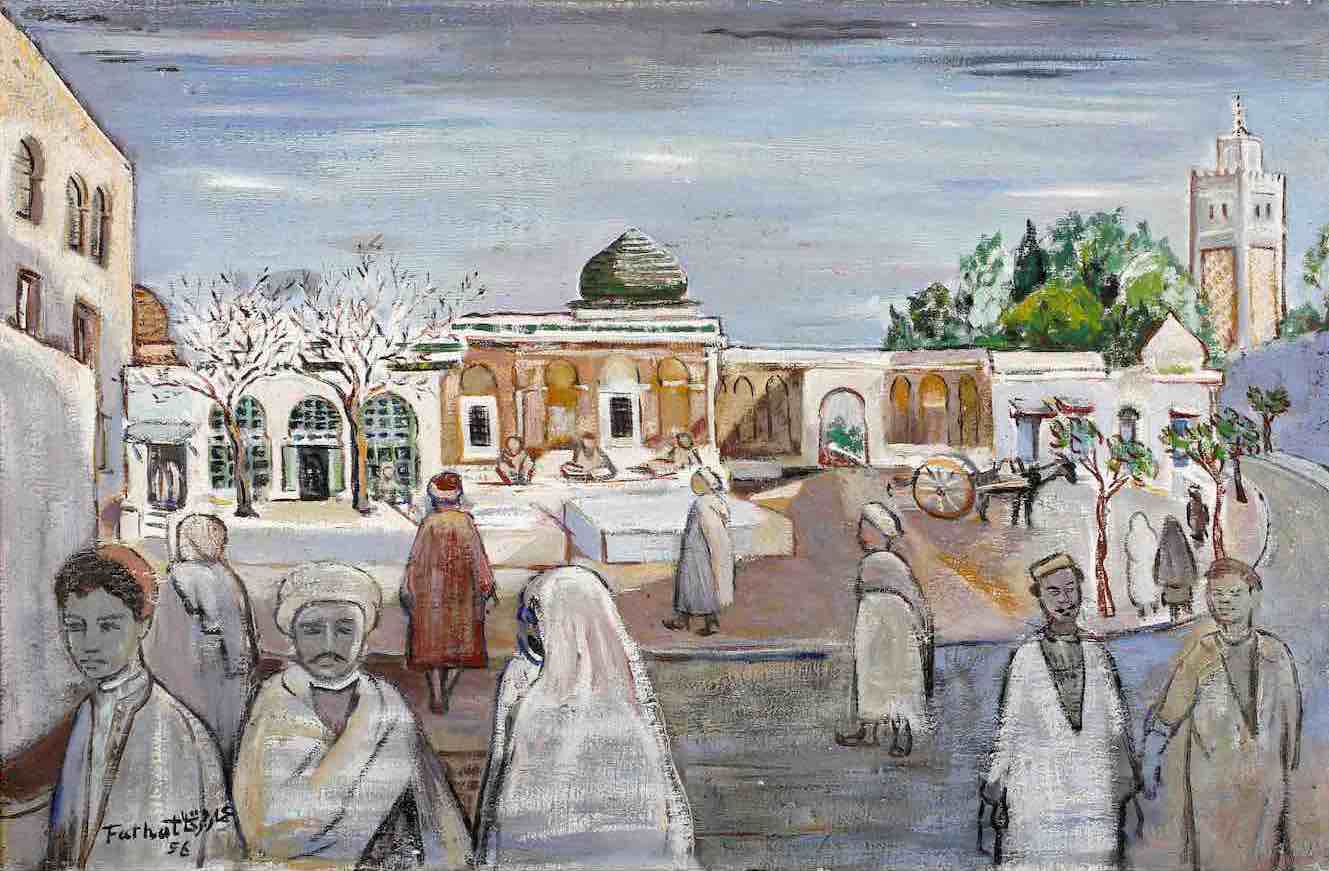
Ammar Farhat - Place de la Kasbah
Aly Ben Salem est né dans une famille citadine tunisoise, Abdelaziz Berraies est le fils d'un ministre beylical issu d'un milieu tunisois aisé, Ammar Farhat est originaire de Béja et Hatem El Mekki est le fils d'un père tunisien et d'une mère indonésienne ; tous rejoignent le Salon tunisien dans les années 1930.
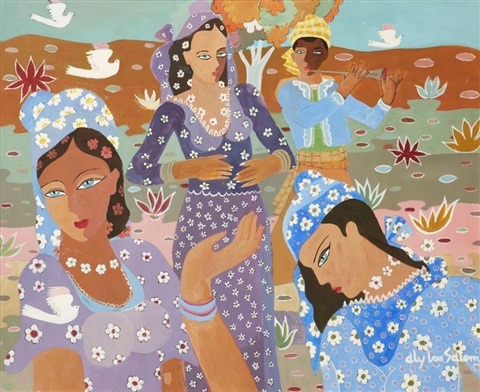
Aly Ben Salem - Quatre jeunes filles en fleurs.
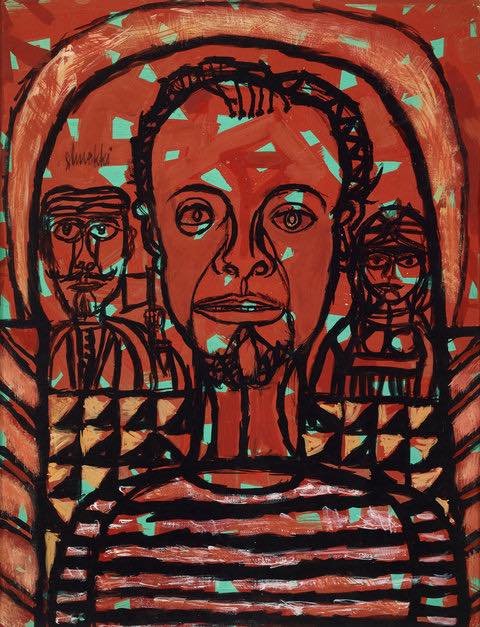
Hatem El Mekki - Portrait de Gorgi
Une vague de peintres figuratifs folkloriques apparaît à cette période, avec Pierre Berjole, Pierre Boucherle, Antonio Corpora, Jules Lellouche et Moses Levy.
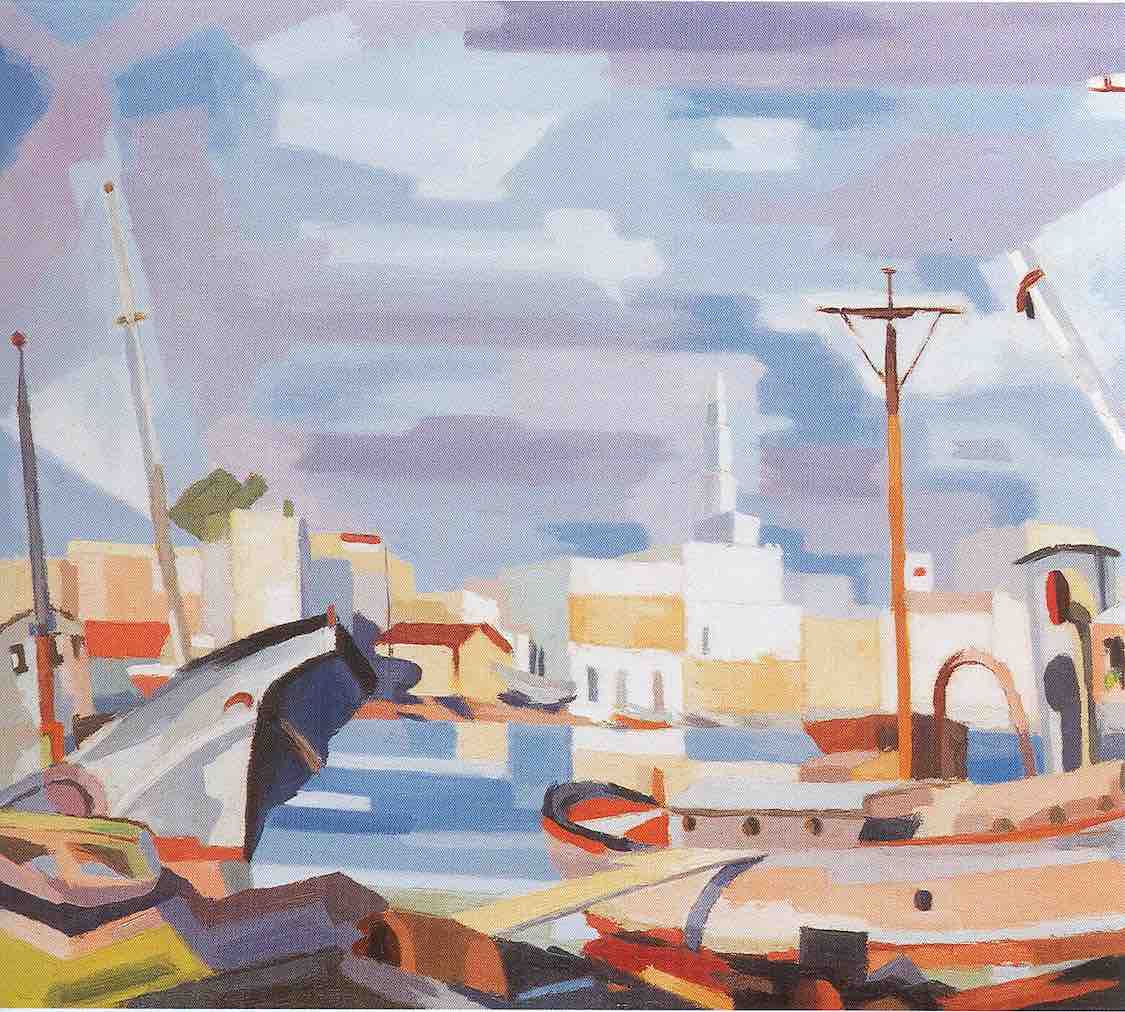
Pierre Berjole
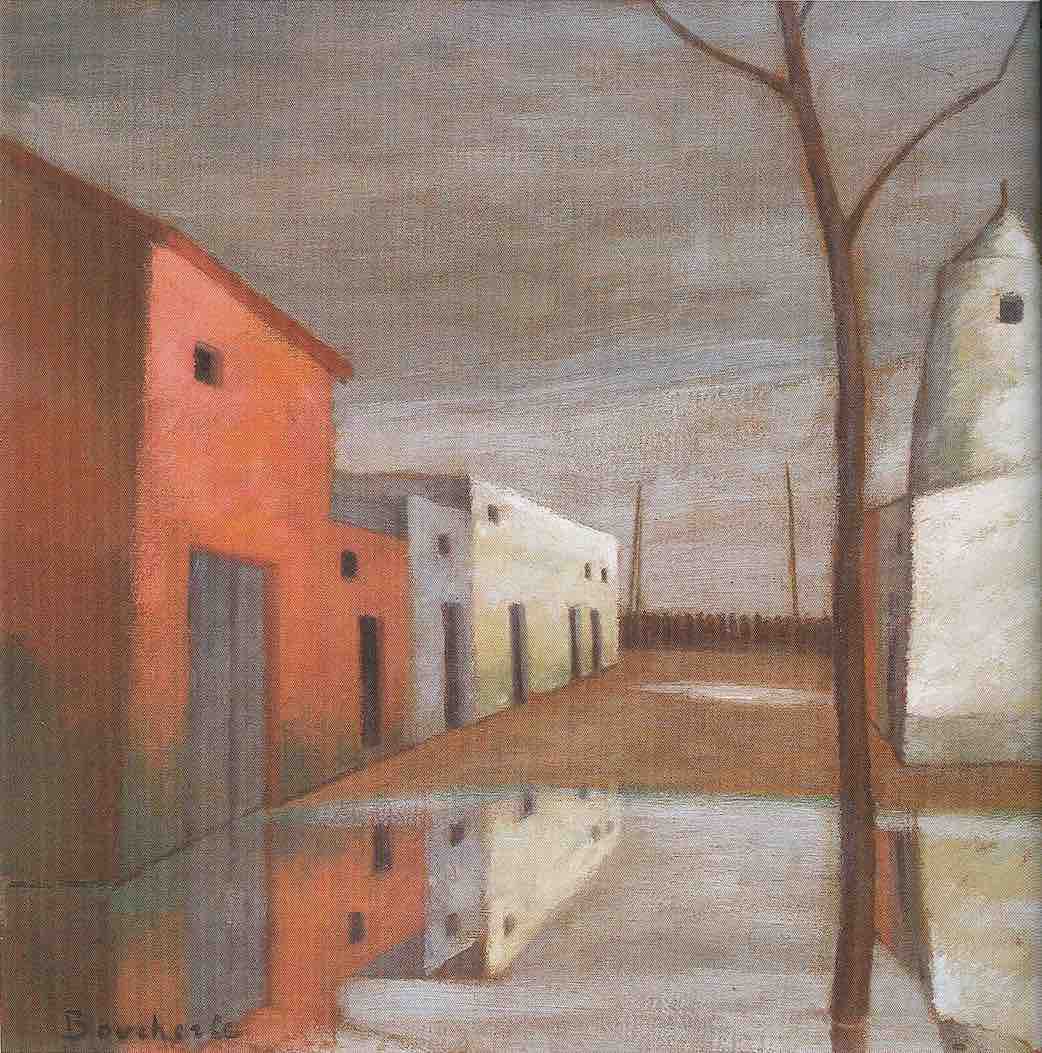
Pierre Boucherle - Moulin de la Goulette
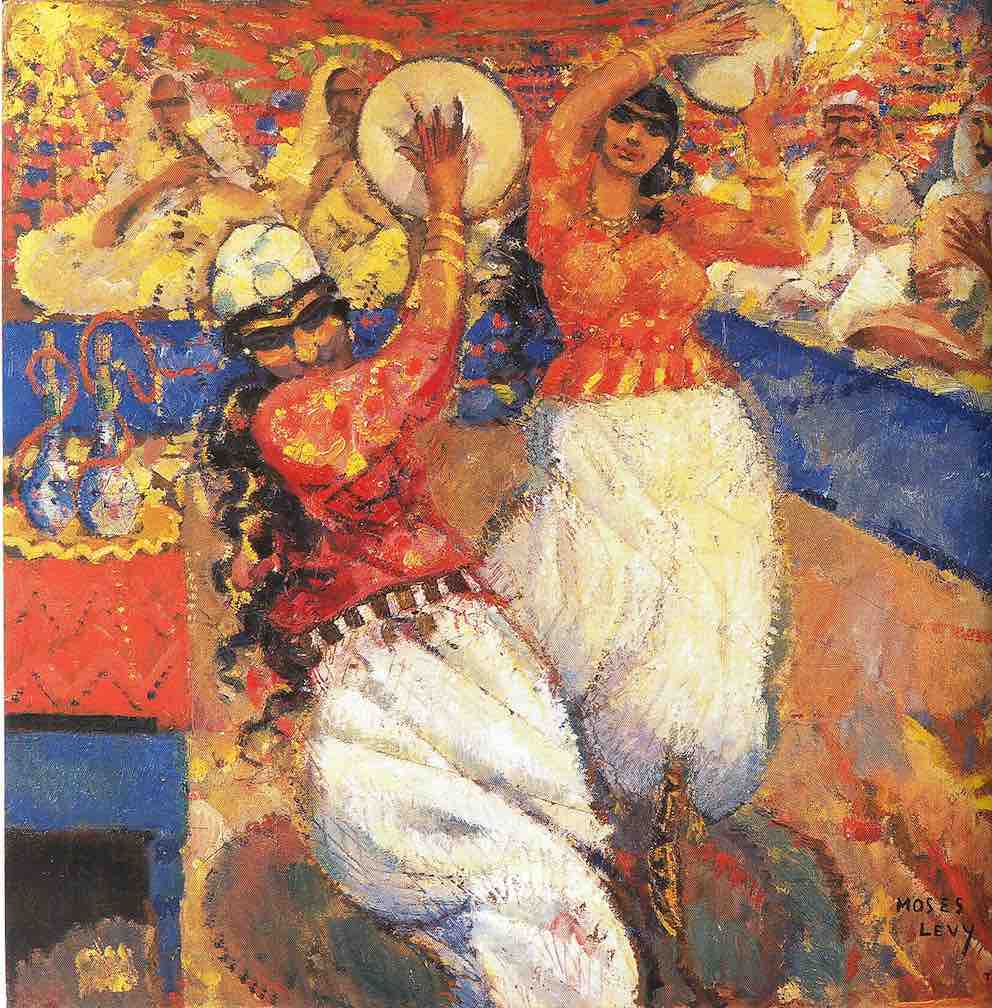
Moses LEVY - Danseuses
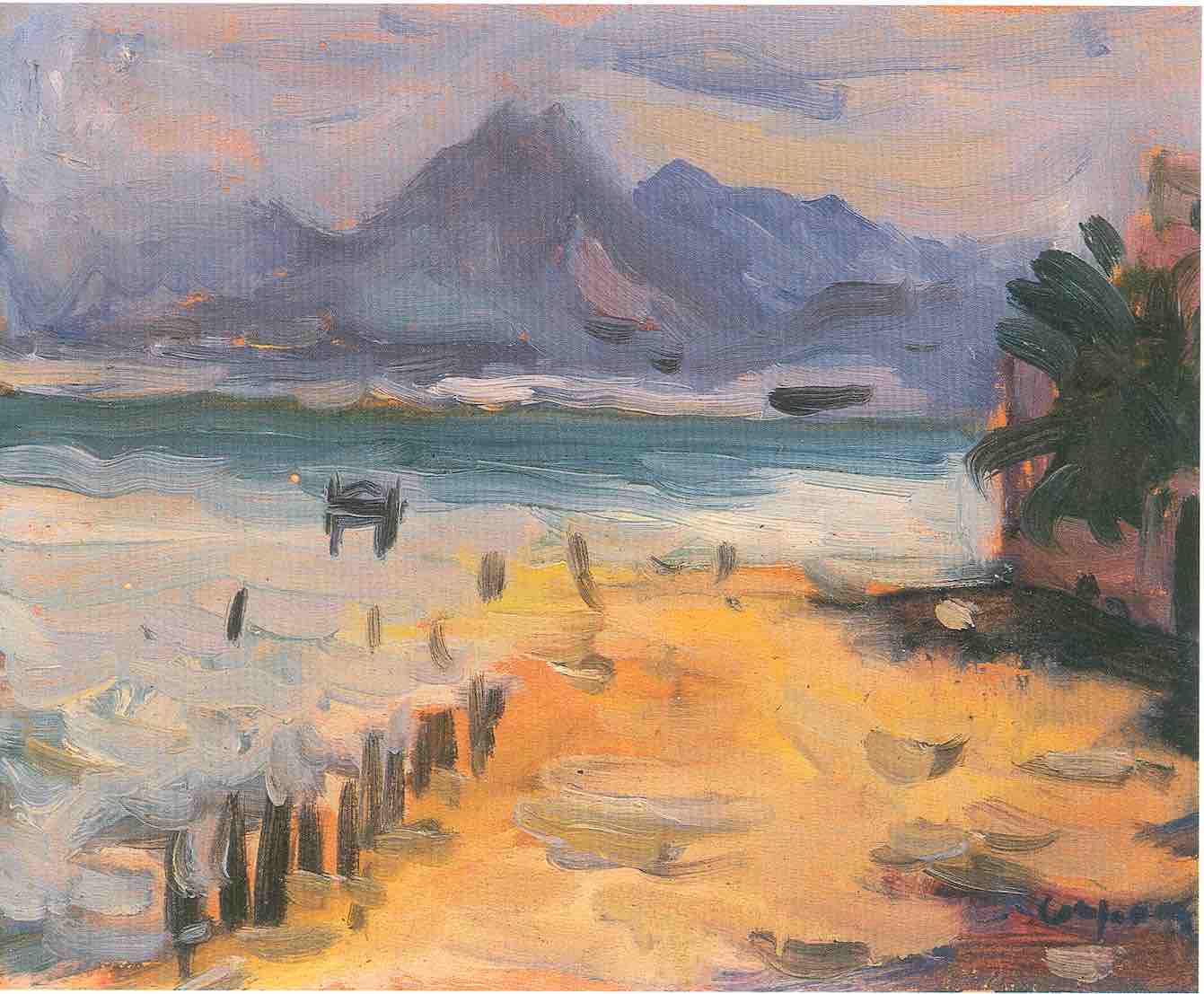
Antonio Corpora - Sidi Bou Said
Après la Seconde Guerre mondiale, d'autres artistes se joignent à eux : Ali Bellagha, Jellal Ben Abdallah, Amara Debbache, Brahim Dahak, Safia Farhat, Abdelaziz Gorgi, Edgard Naccache, Mahmoud Sehili ou encore Zoubeir Turki.
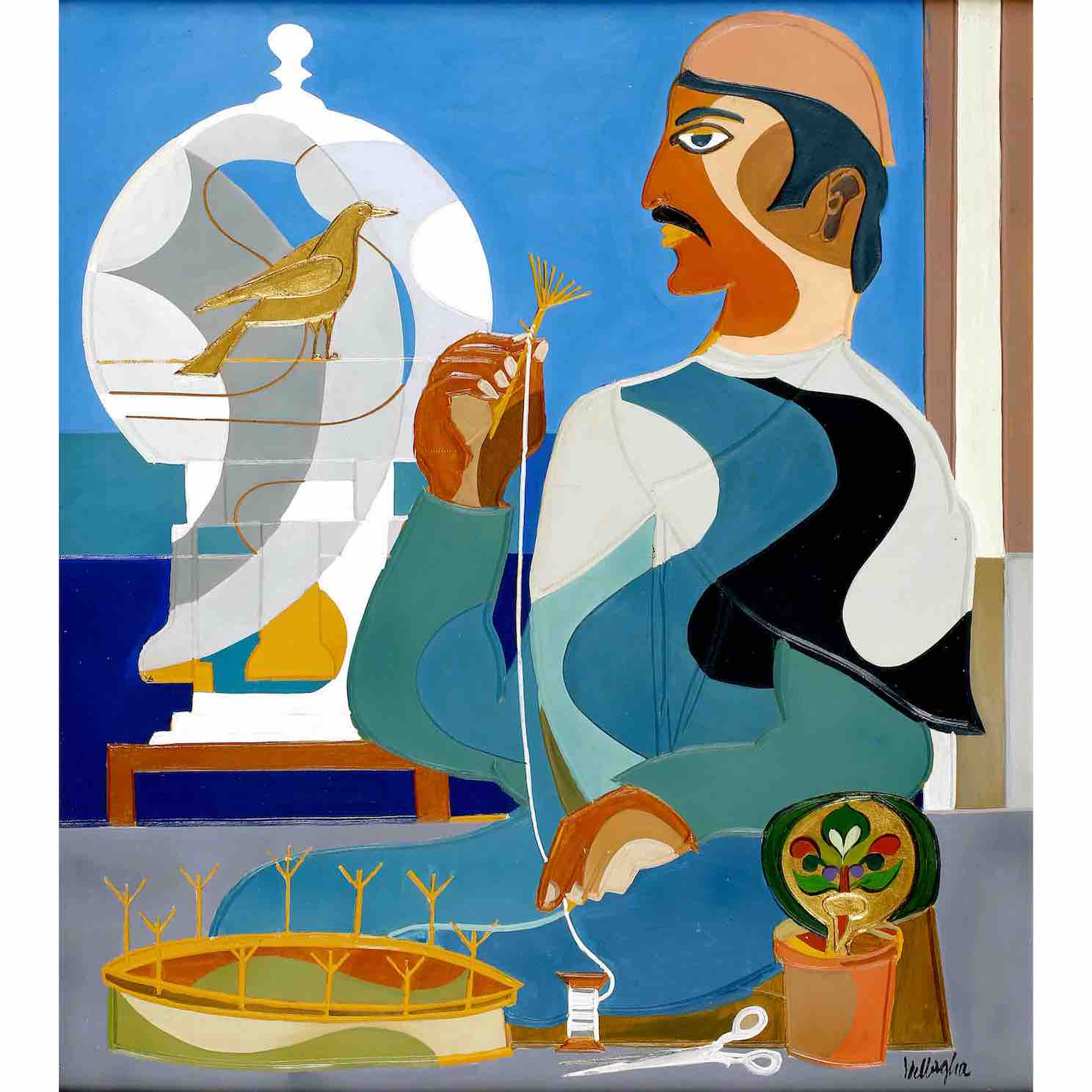
Ali Bellagha - Bouquet de fel
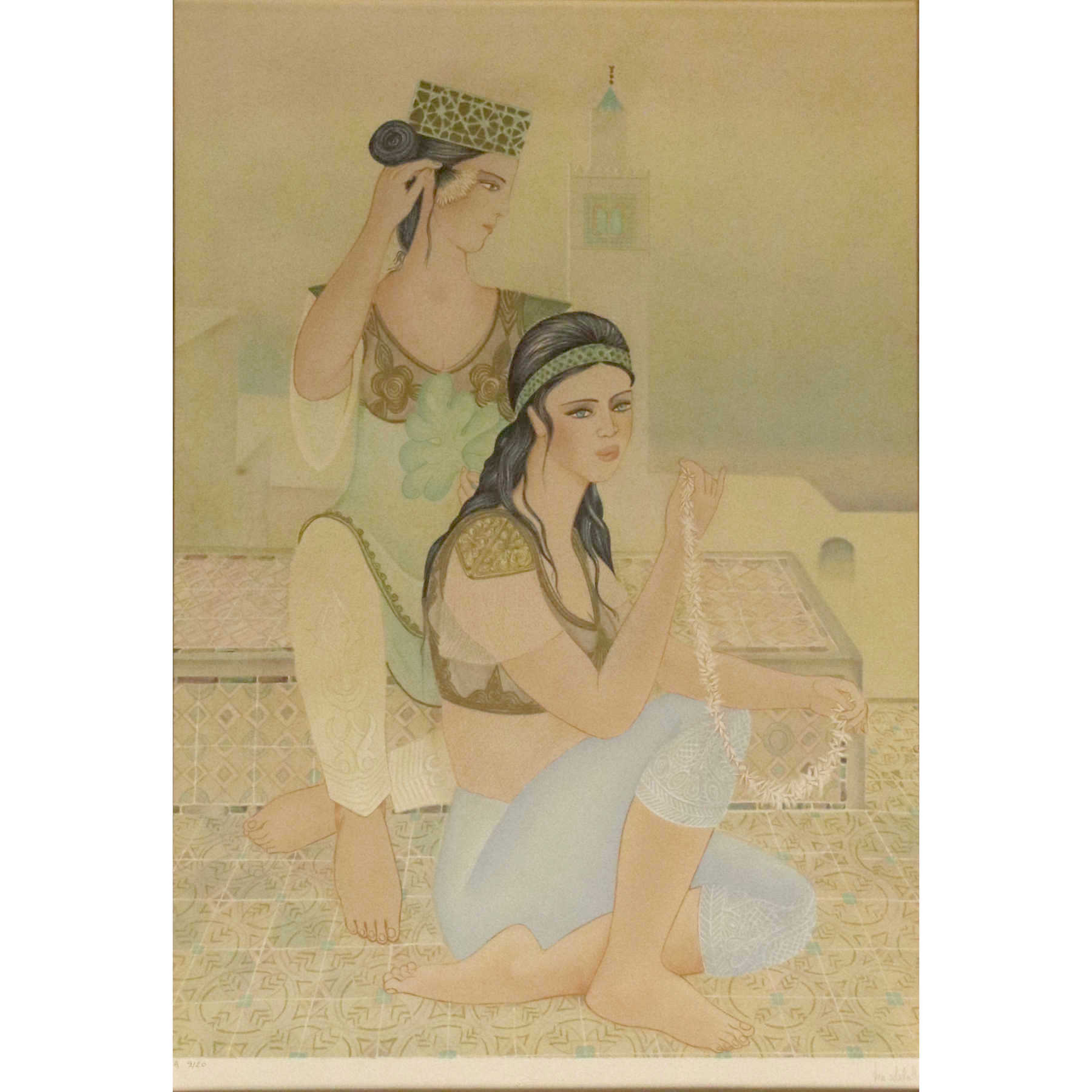
Jellal BEN ABDALLAH
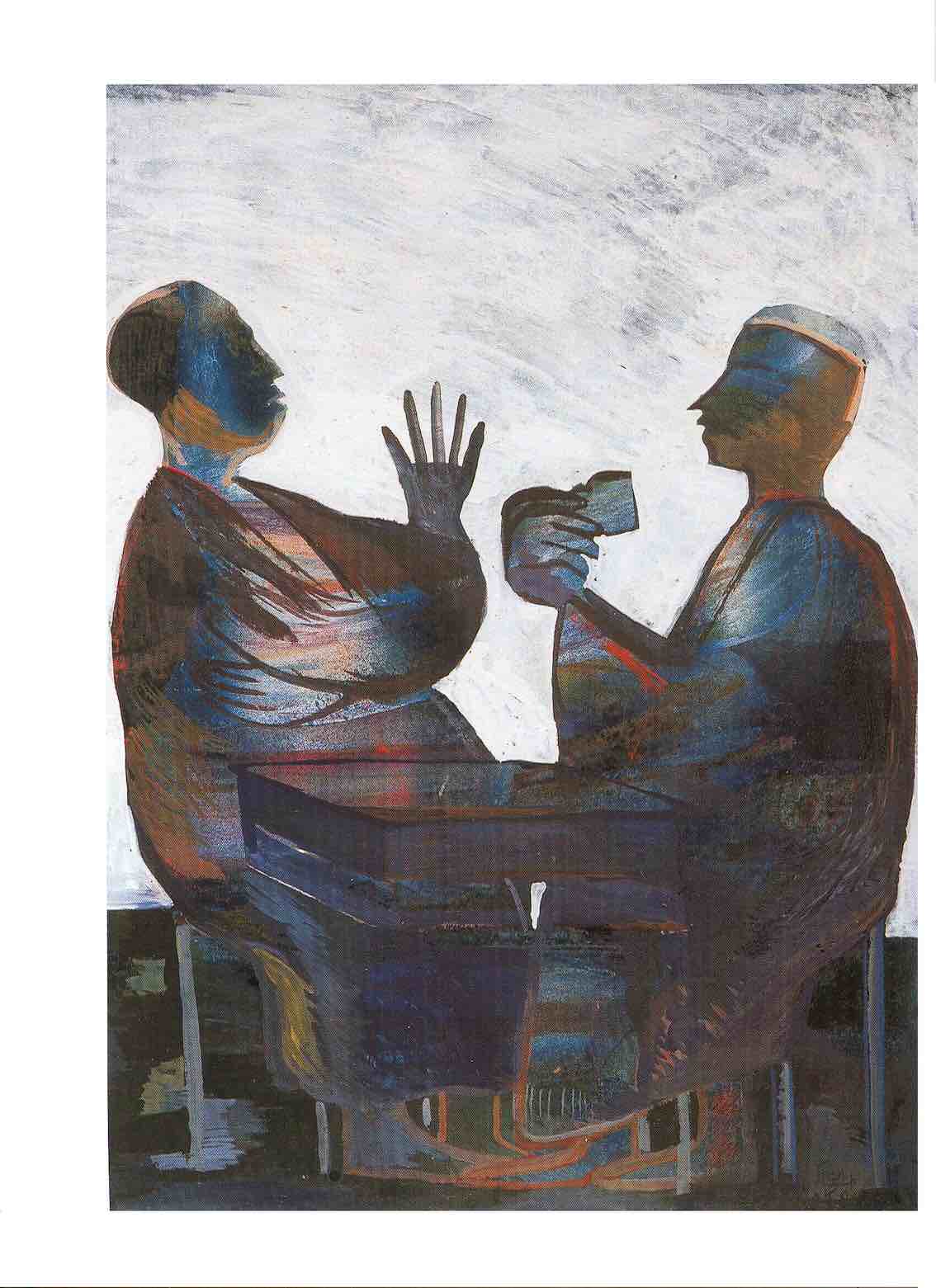
Brahim Dhahak - Colloque
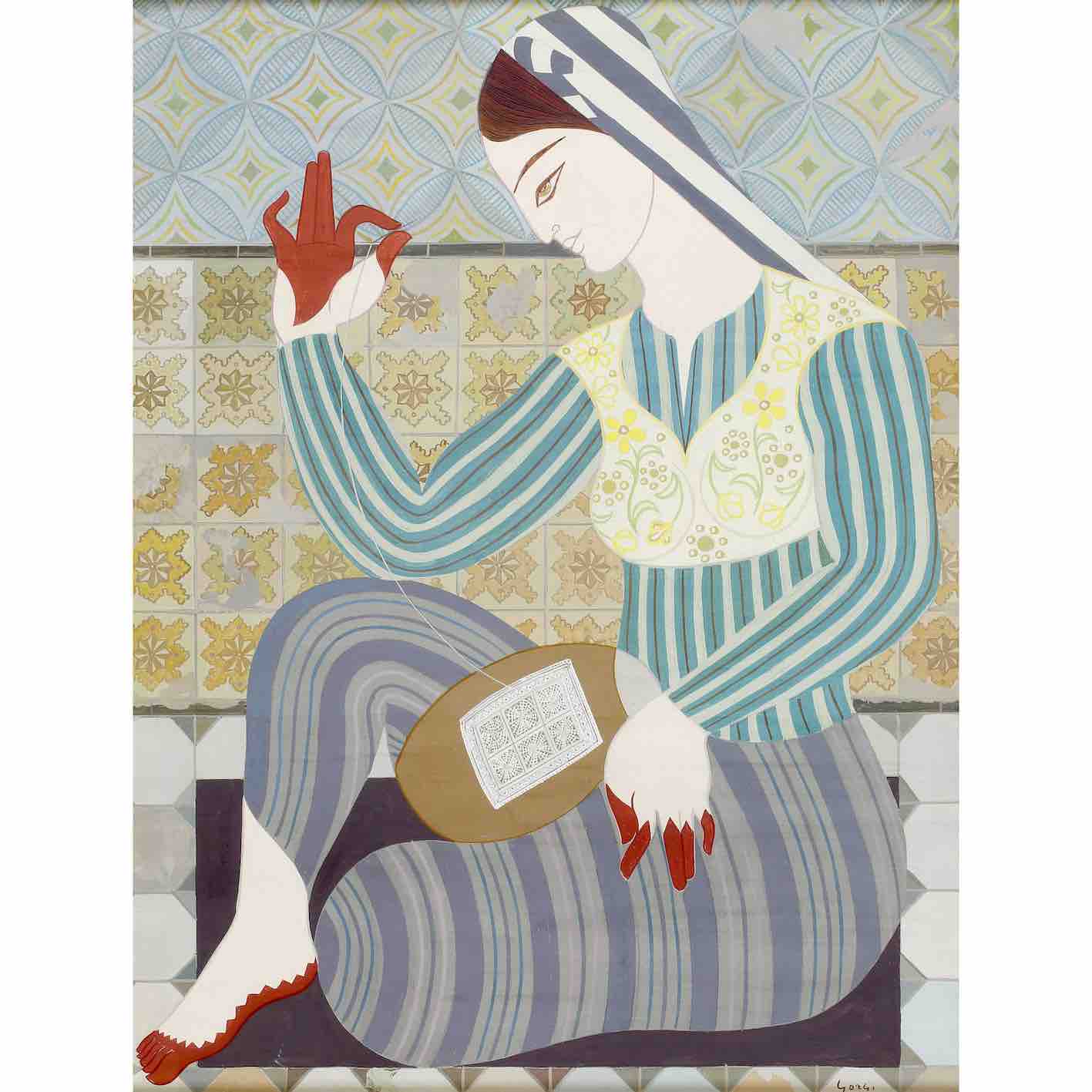
Abdelaziz GORGI
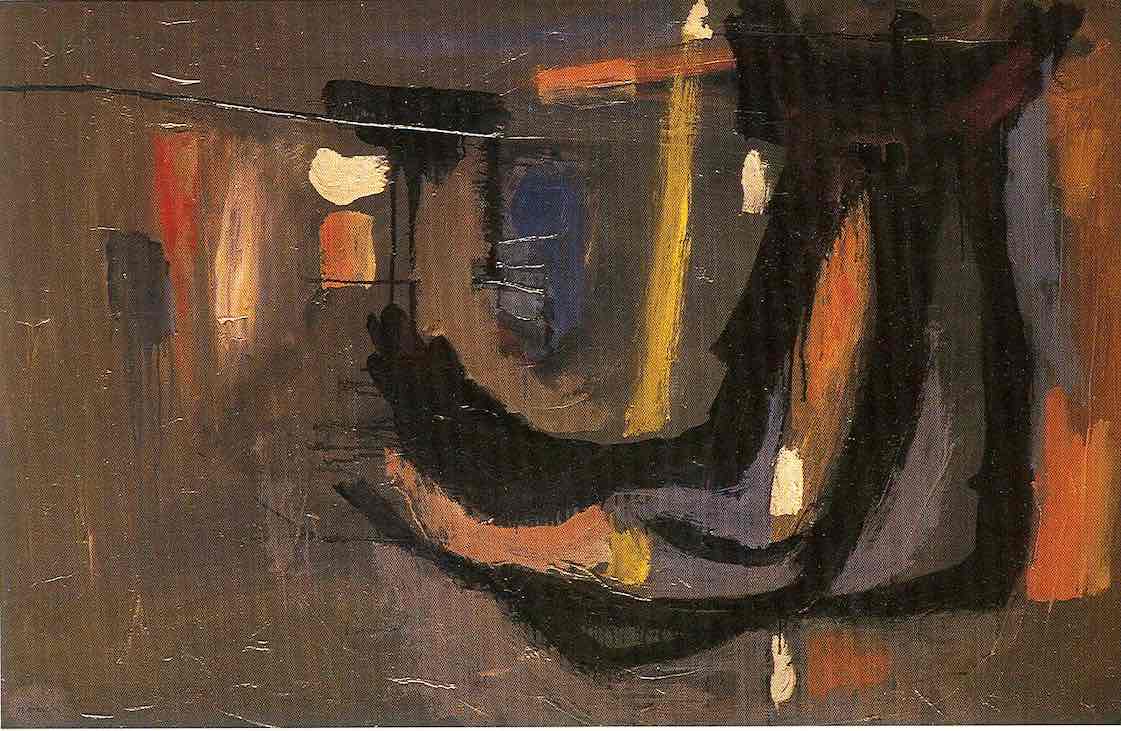
Edgar Naccache - Formes
La naissance d'une peinture tunisienne contemporaine est fortement liée à l'émergence de l'École de Tunis, mise en place en 1949 par un groupe de quatre artistes — Boucherle, Corpora, Lellouche et Levy — unis par la volonté d'incorporer des thèmes proprement tunisiens et rejetant l'influence orientaliste de la peinture coloniale.
Elle réunit des peintres français et tunisiens, musulmans, chrétiens et juifs, comme Bellagha, Ben Abdallah, Dhahak, Ammar Farhat, Safia Farhat, Gorgi, Naccache, Hassen Soufi, Hédi Turki, Zoubeir Turki et Yahia Turki. Tous se donnent pour mission d'organiser la vie artistique tunisienne, en assumant la continuité du Salon tunisien et en créant le service des arts plastiques au sein du ministère de la Culture.
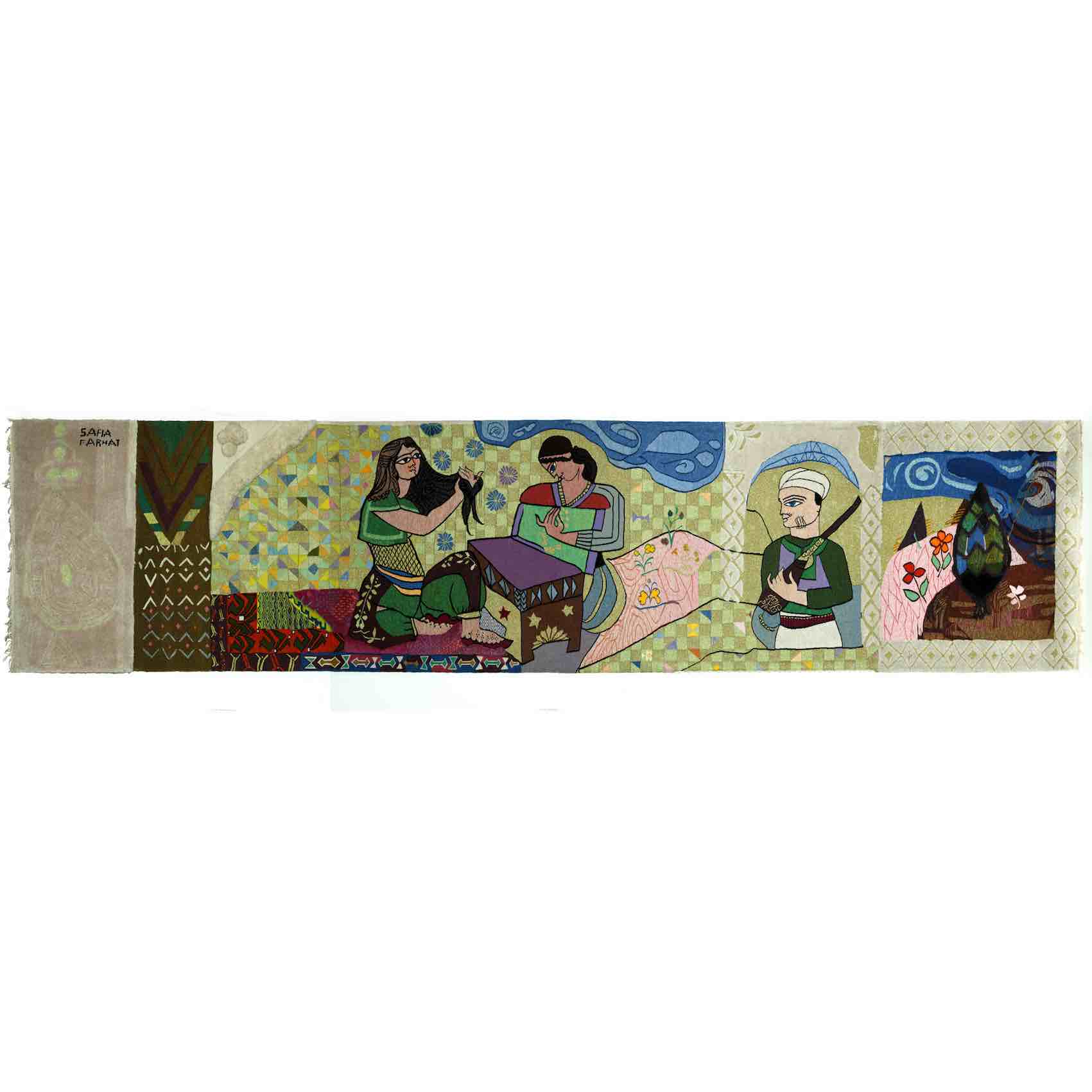
Safia Farhat - Scène d’intérieur
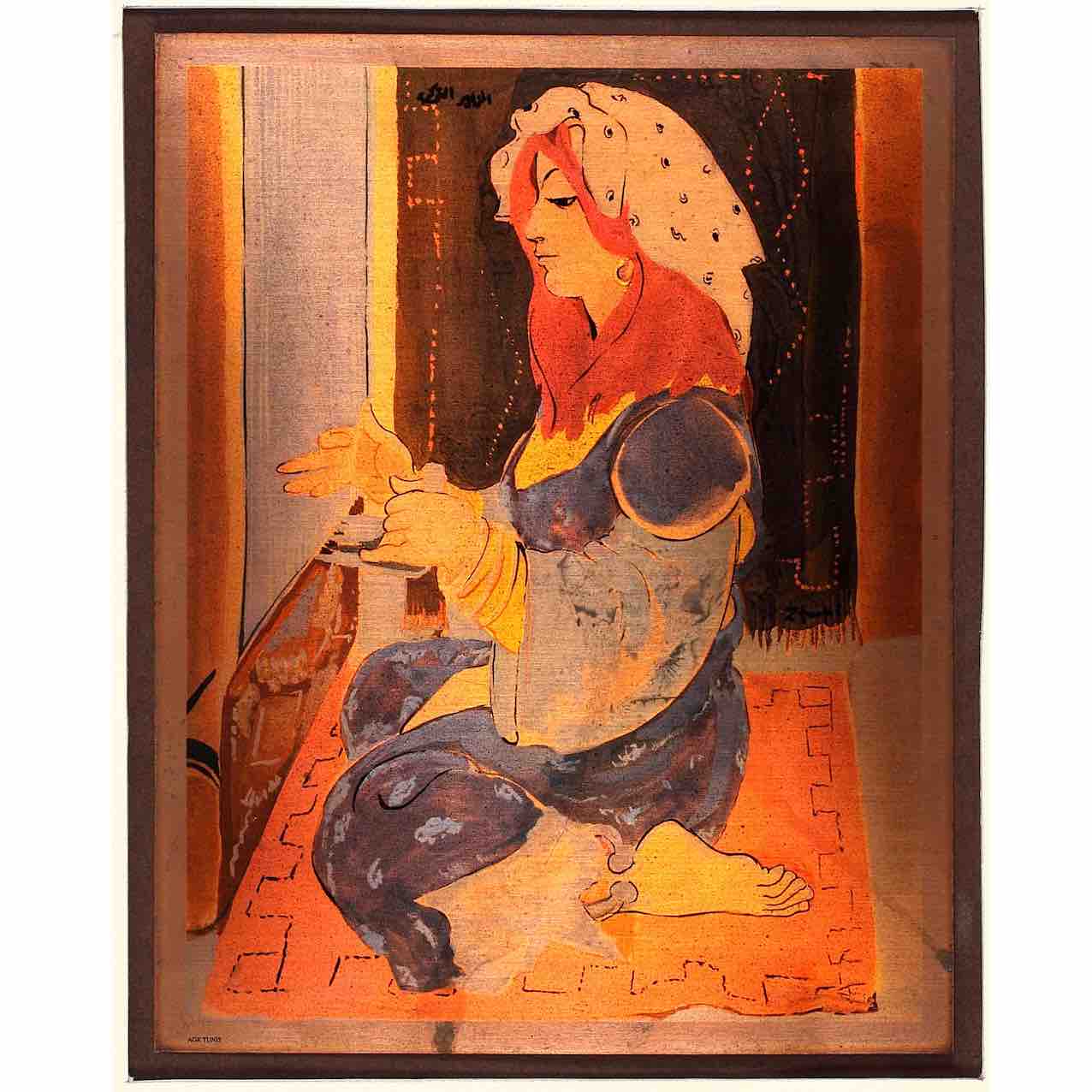
Zoubeir Turki - La tisseuse
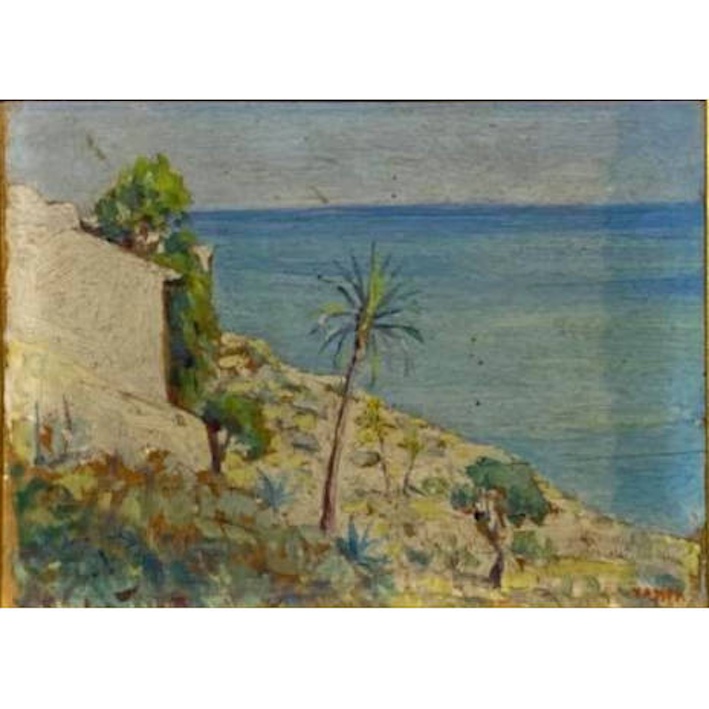
Yahia Turki - Vue de Sidi Bou Saïd
Indépendance
Après l'indépendance en 1956, le mouvement pictural tunisien entre dans une dynamique d'édification nationale, des artistes se mettant au service de l'État. Sous l'impulsion de ministres de la Culture tels que Habib Boularès, une politique volontariste est mise en place, permettant à des artistes d'accéder à une reconnaissance internationale à l'exemple d'El Mekki ou de Zoubeir Turki.
Dans les années 1950 et 1960 émerge la peinture abstraite, grâce à Naccache, Debbache, Naceur Ben Cheikh, Nello Lévy, Hédi Turki, Néjib Belkhodja ou Carlo Caracci, alors que l'art figuratif est en constante évolution.
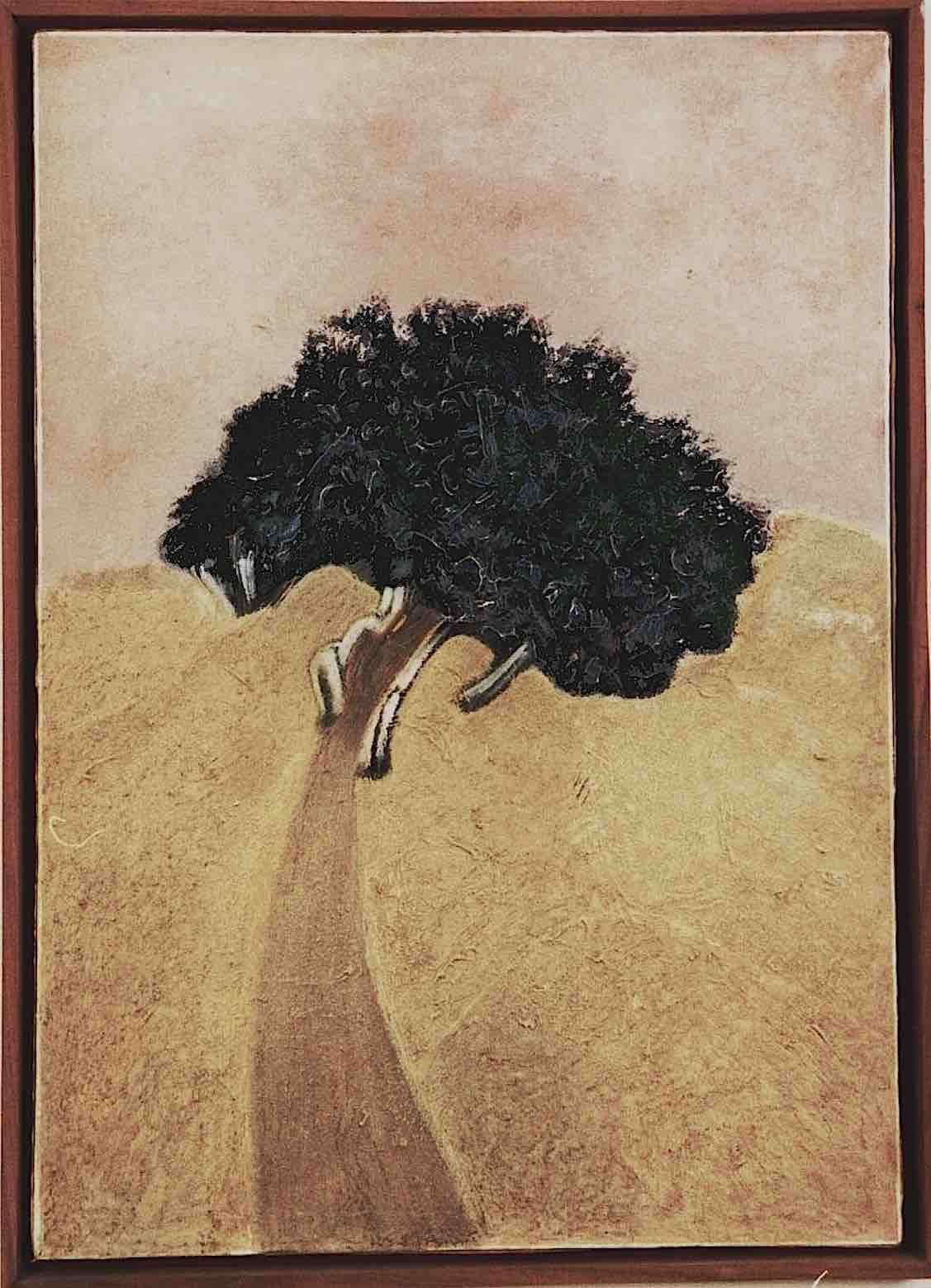
Naceur Ben Cheikh
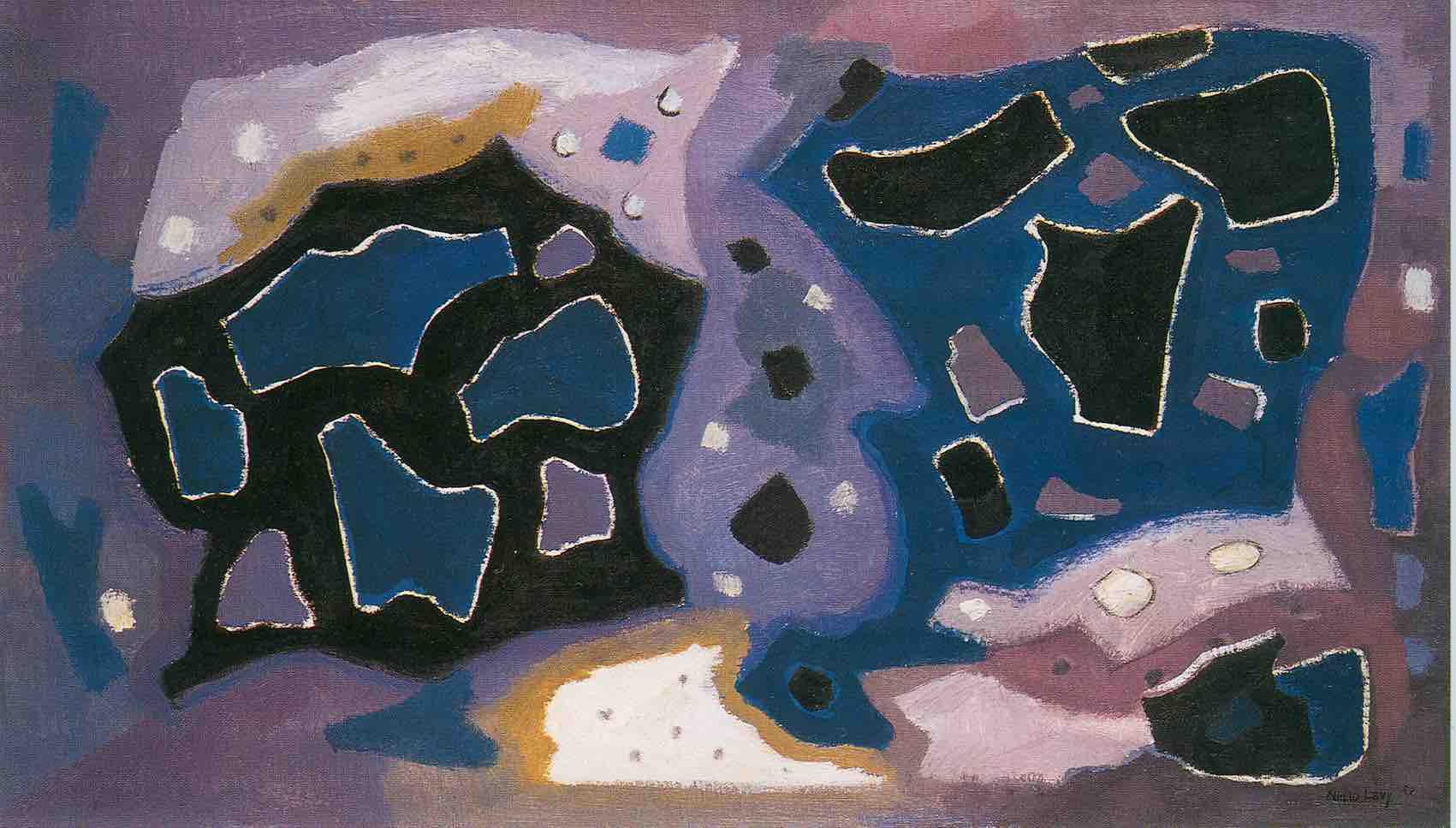
Nello LEVY - Bloc de la Goulette
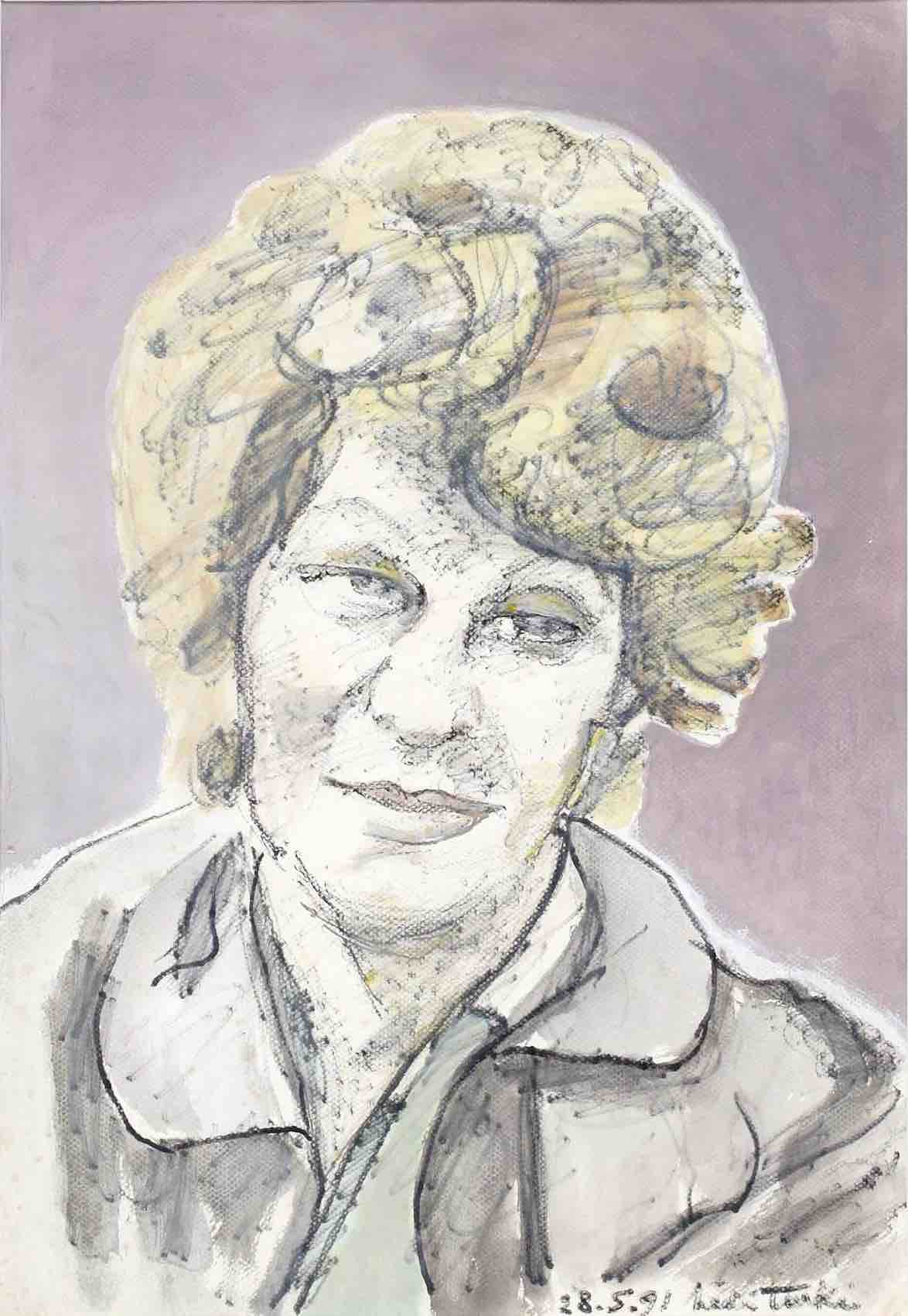
Hedi Turki
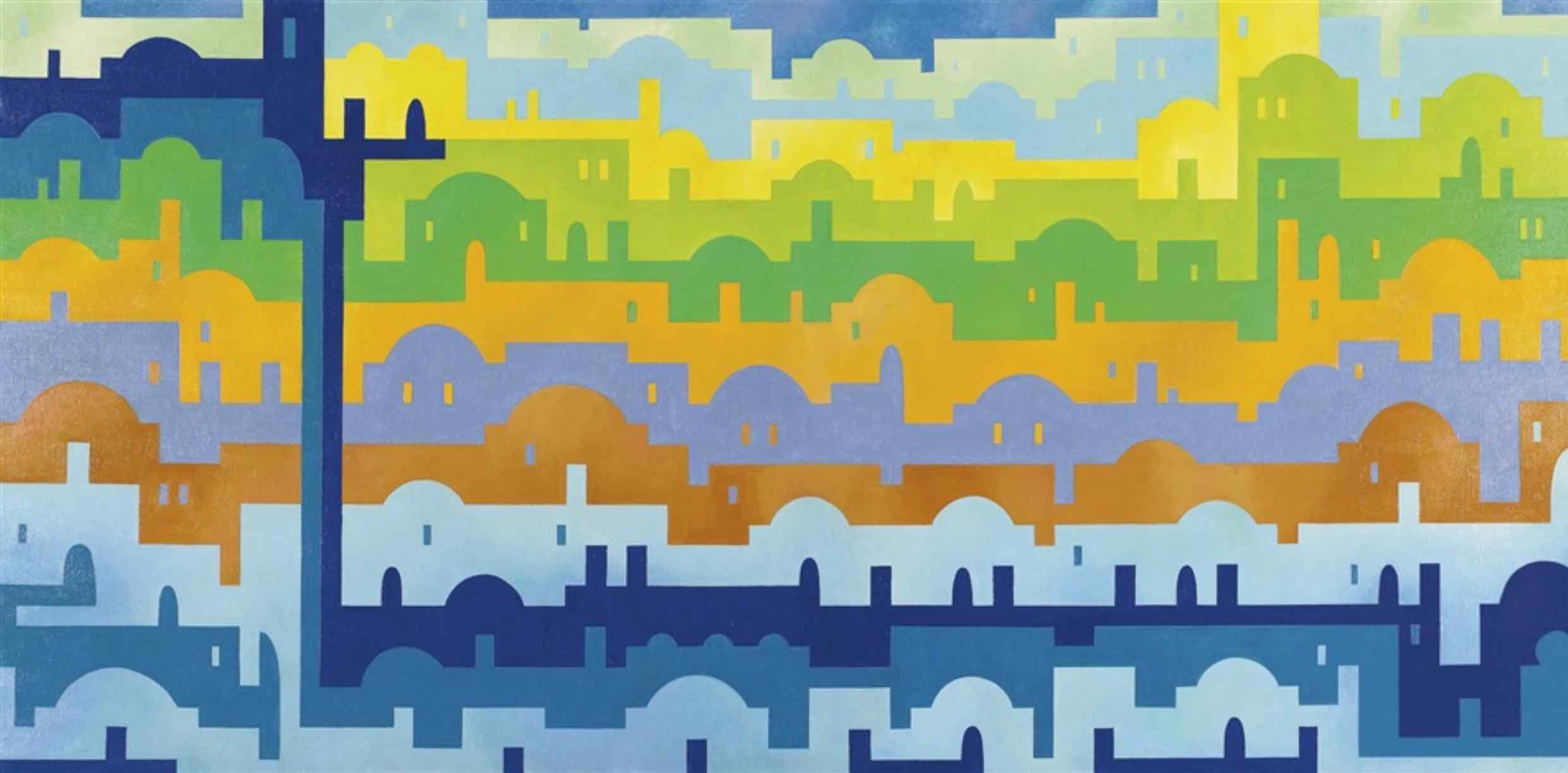
Néjib Belkhodja
Face à eux se trouvent tenants de l'authenticité, à l'instar de Belkhodja, Nja Mahdaoui et Abdelmajid El Bekri, tendance qui fait des émules dont Abderrahmane Metjaouili, Habib Bouabana, Moncef Ben Amor et Foued Zaouche, qui se place dans la ligne artistique de Khayachi, dont le fils Noureddine fait revivre la carrière et connaît un grand succès.
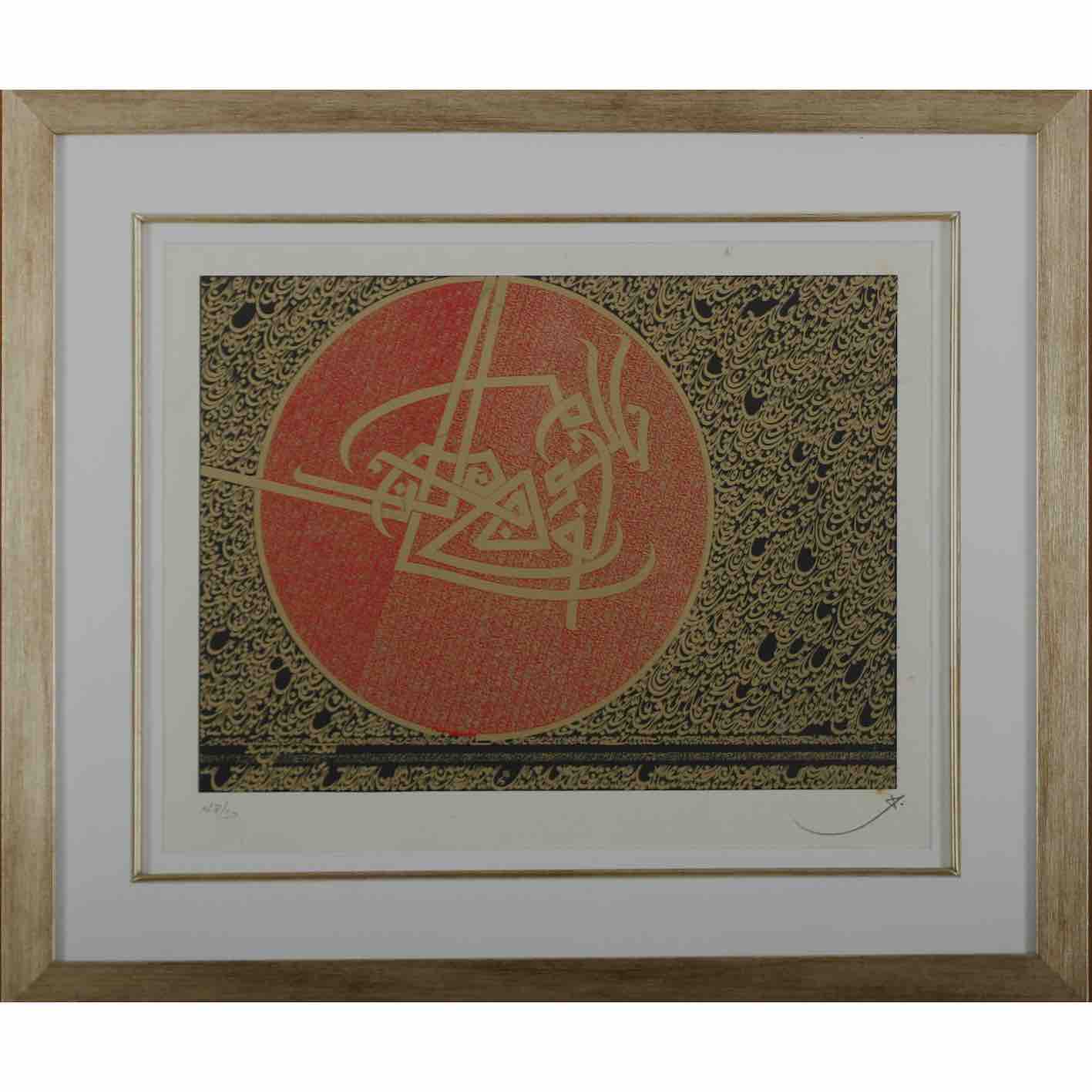
Nja_Mahdaoui - Calligraphie
Au cours des années 1970, une nouvelle vague d'artistes, moins homogène dans leur formation artistique, apparaît. Nombreux sont ceux qui ont suivi un enseignement artistique presque exclusivement tunisien, à l'École des beaux-arts de Tunis, à l'Institut technologique d'art ou à l'École nationale d'architecture et d'urbanisme, comme Abdelmajid Ben Messaoud, Fethi Ben Zakour, Adel Megdiche, Ali Zenaïdi, Noureddine El Hani, Raouf Gara, Brahim Azzabi, Mohamed Njeh, Habib Bida, etc.
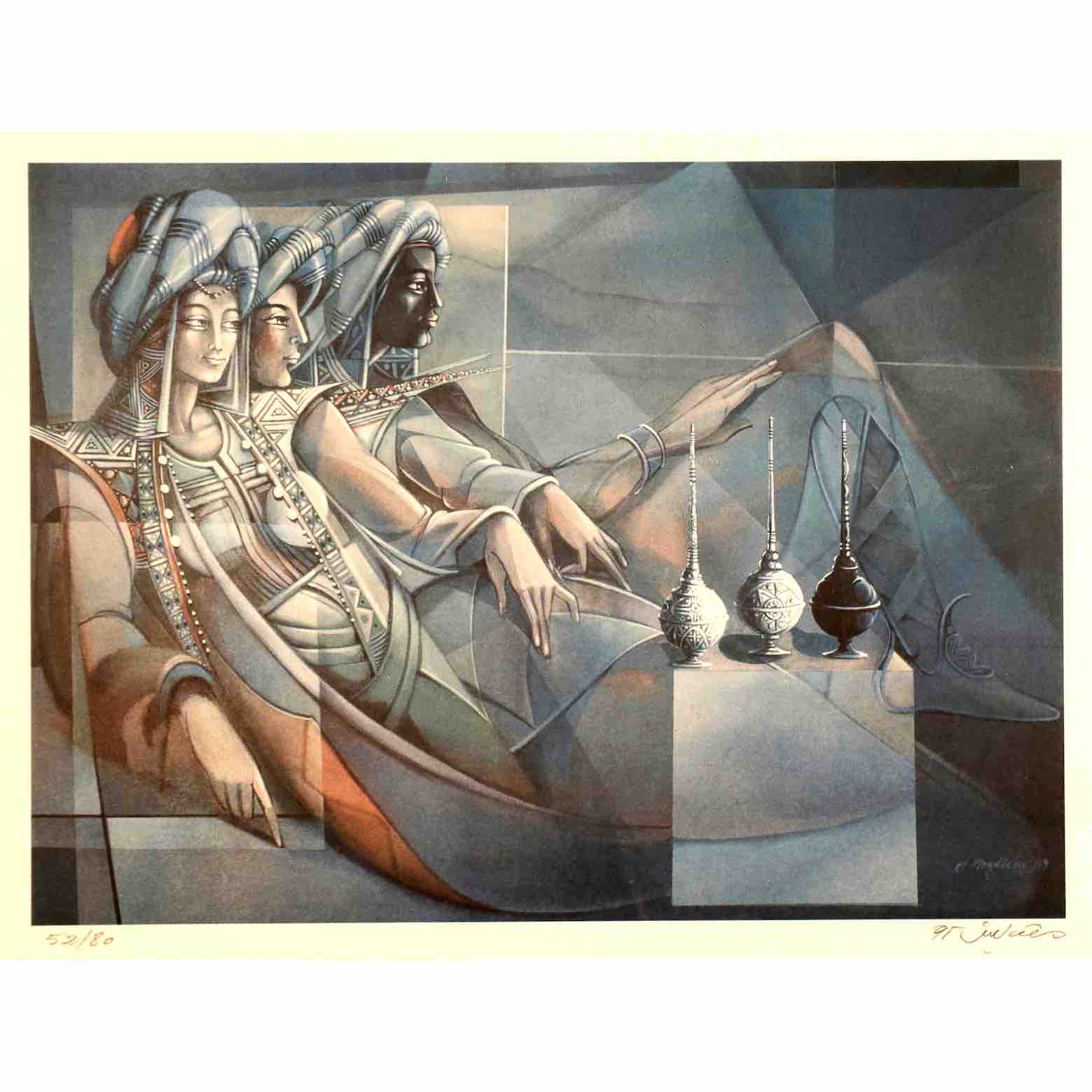
Adel MEGDICHE
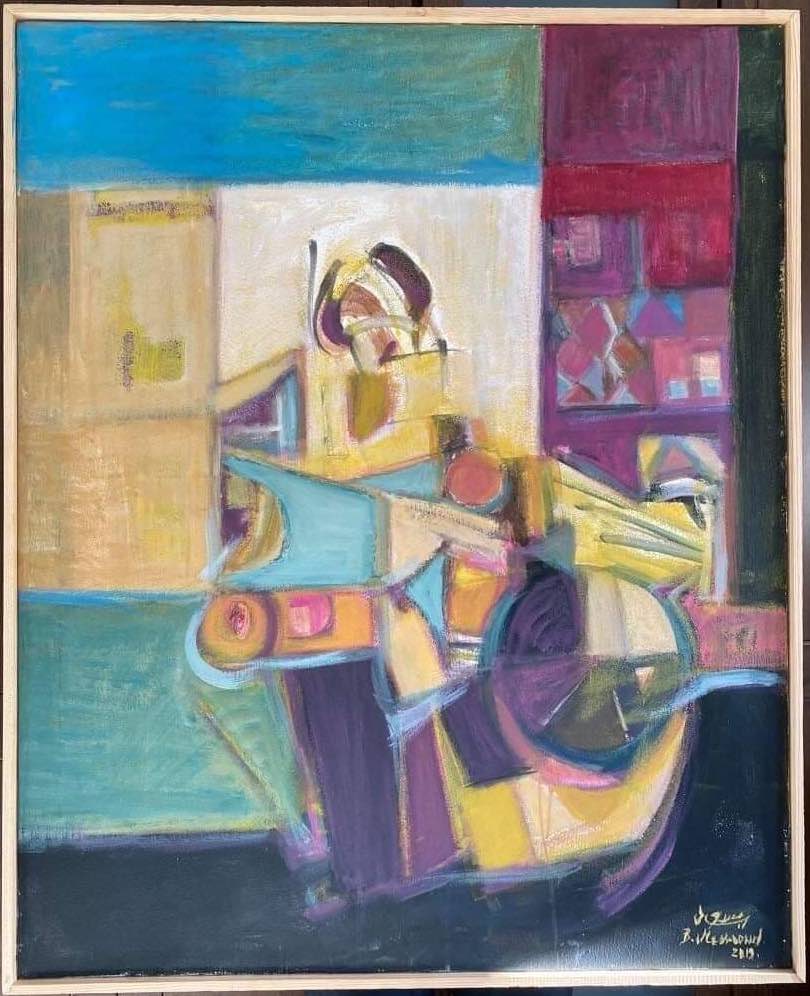
Abdelmejid Ben Messaoud
Certains artistes de cette génération choisissent de poursuivre leur formation en Europe dans des disciplines autres que la peinture : Khalifa Cheltout, Faouzia Hicheri, Gouider Triki et Hédi Labbane suivent ainsi des études d'arts graphiques à Paris. Quant aux artistes dits « naïfs », comme Ali Guermassi, Mehrezia Ghadhab et Ahmed Hajeri, ils imposent leurs propres styles.
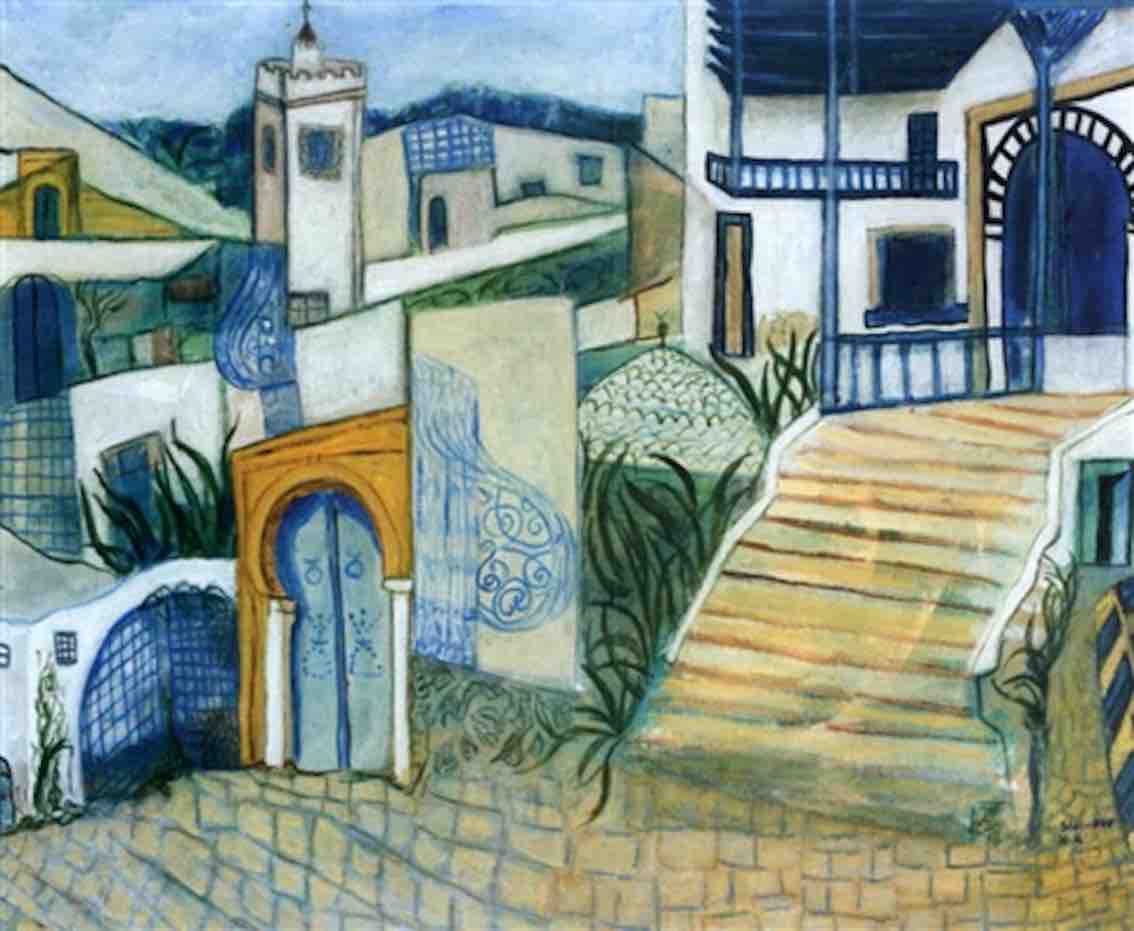
Ahmed Hajeri - Sii Bou Saïd
Enfin Abdelwahab Amich (1932- ) peintre, graveur, portraitiste, est aujourd’hui incontestablement le doyen des peintres tunisiens.
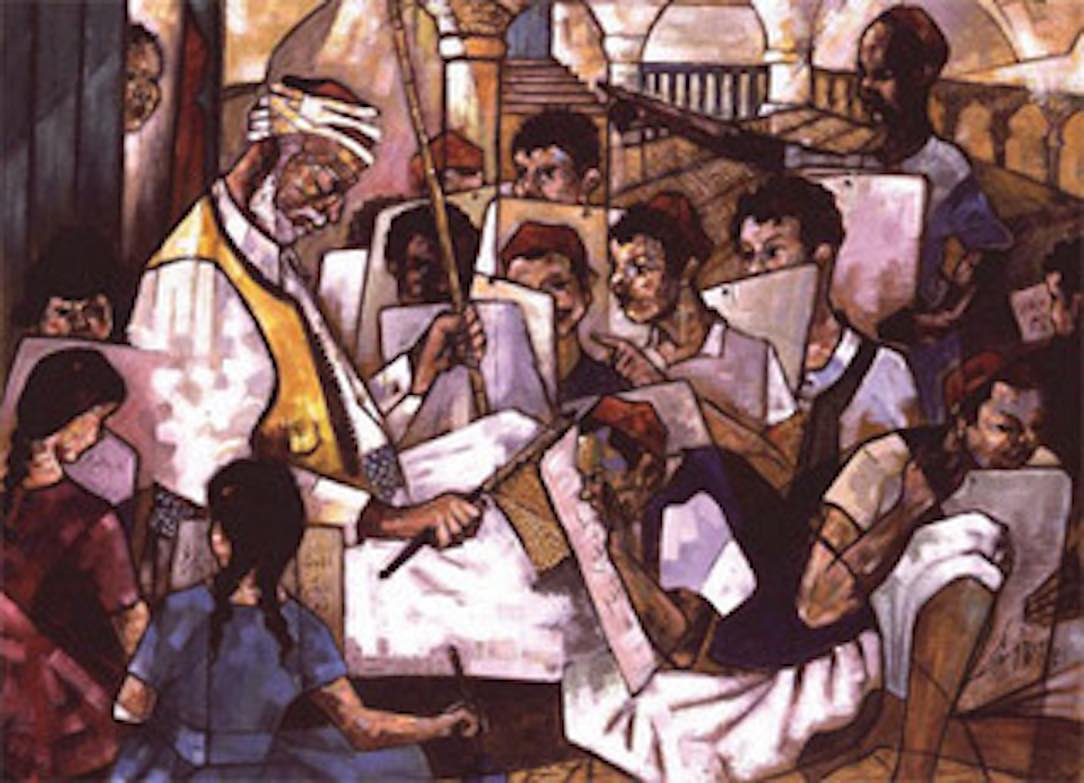
Source: https://fr.wikipedia.org/wiki/Peinture_tunisienne
English version
Because of the prohibition on the reproduction of the human image, the reigning Muslim dynasties stifled pictorial art for centuries.
The painters then turned to calligraphy. The introduction of plastic art in Tunisia took place at the beginning of the 19th century, through painting under glass.
At the end of the century, a new trend emerged, easel painting, which allowed the artist to express his subjective point of view; Ahmed Osman, son of a general of the Tunisian Beylical army, who studies academic painting in Rome, is the first representative. Among his works is the famous portrait of General Kheireddine Pasha on horseback.
French Protectorate
The history of Tunisian painting really begins with the figures of Hédi Khayachi and Abdelwaheb Djilani alias Abdul, brother of historian Hassan Hosni Abdelwaheb. Both from the Tunisian bourgeoisie, they followed their artistic studies in Europe and were attached to realism, folk art and landscaping, even if Khayachi specialized in the art of portraiture. Official painter of the beys of Tunis, he became the most famous Tunisian portrait painter of all time; he also works for senior officials and large Tunisian families.
On May 11, 1894, the first Tunisian Salon opened, in the premises of the Maltese Workers' Association transformed for the occasion into a gallery. The event welcomes the pioneers of Tunisian painting, with the exception of Khayachi who handles Western painting.
In 1912, Abdul was the first Tunisian to exhibit his works there, followed by Yahia Turki from 1923. We are witnessing the birth of a figurative art which is still interested in the same themes despite the varied origins of the artists. While Turki was born to a Djerbian father and a Turkish mother. Aly Ben Salem was born in a Tunisian urban family, Abdelaziz Berraies is the son of a Beylical minister from a well-off Tunisian background, Ammar Farhat is from Béja and Hatem El Mekki is the son of a Tunisian father and an Indonesian mother; all joined the Tunisian Salon in the 1930s.
A wave of folkloric figurative painters appeared during this period, with Pierre Berjole, Pierre Boucherle, Antonio Corpora, Jules Lellouche and Moses Levy. After the Second World War, other artists joined them: Ali Bellagha, Jellal Ben Abdallah, Amara Debbache, Brahim Dhahak, Safia Farhat, Abdelaziz Gorgi, Edgard Naccache, Mahmoud Sehili or Zoubeir Turki.
The birth of contemporary Tunisian painting is strongly linked to the emergence of the School of Tunis, set up in 1949 by a group of four artists - Boucherle, Corpora, Lellouche and Levy - united by the desire to incorporate specifically Tunisian themes and rejecting the orientalist influence of colonial painting. It brings together French and Tunisian painters, Muslims, Christians and Jews, such as Bellagha, Ben Abdallah, Dhahak, Ammar Farhat, Safia Farhat, Gorgi, Naccache, Hassen Soufi, Hédi Turki, Zoubeir Turki and Yahia Turki. All of them set themselves the task of organizing Tunisian artistic life, by assuming the continuity of the Tunisian Salon and by creating the plastic arts service within the Ministry of Culture.
Independence
After independence in 1956, the Tunisian pictorial movement entered into a dynamic of nation-building, with artists putting themselves at the service of the State. Under the impetus of Ministers of Culture such as Habib Boularès, a proactive policy has been put in place, allowing artists to gain international recognition such as El Mekki or Zoubeir Turki.
In the 1950s and 1960s, abstract painting emerged, thanks to Naccache, Debbache, Naceur Ben Cheikh, Nello Lévy, Hédi Turki, Néjib Belkhodja or Carlo Caracci, while figurative art was constantly evolving.
In front of them, there are supporters of authenticity, like Belkhodja, Nja Mahdaoui and Abdelmajid El Bekri, a trend that is emulated including Abderrahmane Metjaouili, Habib Bouabana, Moncef Ben Amor and Foued Zaouche, who is in line with artistic artist of Khayachi, whose son Noureddine revived his career and enjoyed great success.
During the 1970s, a new wave of artists, less homogeneous in their artistic training, appeared. Many are those who have followed an artistic education almost exclusively Tunisian, at the School of Fine Arts in Tunis, at the Technological Institute of Art or at the National School of Architecture and Urbanism, such as Abdelmajid Ben Messaoud , Fethi Ben Zakour, Adel Megdiche, Ali Zenaïdi, Noureddine El Hani, Raouf Gara, Brahim Azzabi, Mohamed Njeh, Habib Bida, etc.
Some artists of this generation chose to continue their training in Europe in disciplines other than painting: Khalifa Cheltout, Faouzia Hicheri, Gouider Triki and Hédi Labbane thus studied graphic arts in Paris. As for the so-called “naive” artists, such as Ali Guermassi, Mehrezia Ghadhab and Ahmed Hajeri, they impose their own styles.
Finally Abdelwahab Amich (1932-) painter, engraver, portrait painter, is today undoubtedly the dean of Tunisian painters.
...à suivre dans...
...to be continued in...
